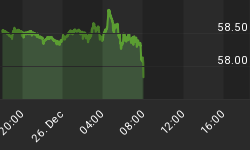What is one of the most valuable technical concepts for investors?
Answer: The simple definition of an up trend or down trend, because using the concept can tell you what will happen next in the market.
Before we apply the up trending principle, let's define it.
The Definition of an Up Trend:
"An up trend is when the up and down movements of a stock or index makes a higher/high, followed by a higher/low ... which is followed by additional higher/highs and higher/lows." (The definition of a down trend is just the opposite: "A down trend is when the up and down movement of a stock or index makes a lower/high, followed by a lower/low ... which is followed by additional lower/highs and lower/lows."
With the definition of these two groups in place, let's now apply it to a simple count on the S&P 500.
The chart presented below is an example of a simple count on the S&P. In this chart, we assign fairly High and Low Relative Strength numbers that we use for scanning the actual daily counts at the end of each trading day. We then plot the counts so our subscribers can see what is happening to the best and strongest stocks (as well as the worse and weakest).
How to read the chart: When one group outnumber's the action of the other group, that particular group is in control. (In other words ... If the red line is higher, then the Bears have the upper hand. If the green line is higher, then the Bulls have the upper hand.)
Today: For today's discussion, focus on the two green arrows we inserted on the chart. The bottom arrow starts on July 24th, where the green line (Very Strong stock count) made a low. After that, the counts proceeded to make higher/highs and higher/lows (see both arrows).
Higher/highs and higher/lows? That is the definition of up trending action on the Very Strong stocks found on the S&P 500. That indicated that the Bulls were continuing to gain ground since July 24th, which also meant there was a positive bias developing in the market. Note: The distance between the two lines is a measurement of the degree to which either group has an advantage.
When you look at the chart, the last up tick was from yesterday (July 16th.), and it made a new higher/high because it went over the horizontal line we drew. While the intra-day or daily gyrations may go down, the net direction of the market remains up due to the up trending of very strong stocks.
(FYI ... This chart is posted every morning before the market opens and can be found in Section 4, Chart 2 of the Standard Subscriber site.)

















